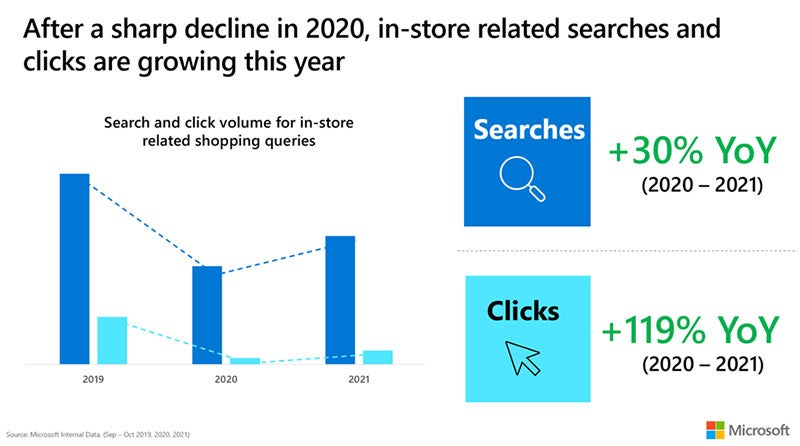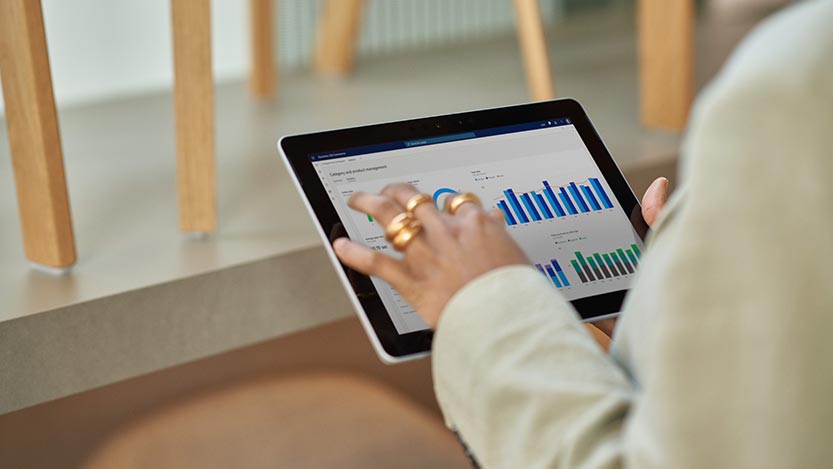ブログ投稿
Revisiting our 2021 consumer retail trends predictions

In our 2021 Consumer Retail Trends Report, we joined with our research partners at Suzy and made five predictions for the year. Of our predictions, all but one turned out as expected. We said:
- DIY projects would see a significant increase with the “New makers market.”
- Shopping at independent, local, small businesses would grow.
- Consumer expectations for digital shopping experiences would increase.
- The move to social good and low impact consumerism is here to stay.
- It’d be the end of “more,” and the beginning of minimalism with the “Buy nothing movement.”
Here are the details about what actually happened.
New makers market
During the pandemic, many people had time to fill with personal projects. This led to an uptick in consumers experimenting with do-it-yourself projects and life hacks. Whether that manifested in personal joy, home improvement, crafts, or up-cycling, it became a quick trend we believe was here to stay.
Data shows that consumers see the value in doing it themselves and now know they can. It all starts with a search.
Our first-party data shows:
- Arts & crafts saw a +22% YoY search volume.1
- Home décor & interior decorating had a +14% YoY search volume.1
- Gardening had a +38% YoY search volume.1
- Lights & lighting had a +39% YoY search volume.1
This data is just some that show the trend in 2021. It even went into the personal realm and evolved into what we’re calling “Self-Care Enthusiast.”
The Self-Care Enthusiast came into being during the first months of the pandemic. Uncertainty and fear, combined with political and social upheaval, created stress and anxiety for many. This specific consumer coped with do-it-yourself self-care at home.
This shopper often looks for new diet tips, fitness ideas, and ways to manage work, school, life, and leisure activities in their hybrid work-life reality. Self-Care Enthusiasts expect to get information quickly and to have a seamless digital experience across multiple devices.
Small business shopping: more days than Saturday
We used to shop only on Saturdays at small businesses, but with the proliferation of digital storefronts, we can do this every day of the week. In 2020, as local and small businesses suffered, consumers sought a way to help—the solution became to buy local whenever possible. This action highlighted the importance of supporting local communities and brought new awareness to consumers. This pattern will be here to stay beyond 2021 as consumers continue to show support for local businesses.
Our first-party data queries show “shop local,” “buy local,” and “support local” increased only marginally YoY. The real surprise was the boom in in-store growth. Searches for “in-store” and related queries grew +30% YoY.1

Fluid, ever-changing expectations
During the pandemic, retail had to rise to the occasion and meet consumer needs in new ways. This led to some brands excelling in the new landscape by offering superior digital experiences. However, exceptional customer-centric website or app design from some retailers drove an increase in consumers' expectations, causing a tidal wave effect. Soon people expected instant gratification and a seamless experience from all retailers.
Successful companies are those that excel in creating exceptional customer services experiences on digital platforms and in the real world. According to a PWC report, one in three consumers (32%)2 say they will walk away from a brand they love after one bad experience. This figure is even higher in Latin America, at 49%.2
At the same time, Salesforce found that customers’ expectations for empathetic, personalized, and digital-first engagement are high and getting higher. Of those polled, 91% say they're more likely to make a repeat purchase after a positive experience.3
Responsible and value-driven
Social good entered the limelight in 2020 and stayed there in 2021. With social good comes responsible retail, whether buying to support a cause, making sustainable purchases, doing more upcycling, or buying used and vintage. Consumers are using their wallets to take a stand.
We saw that the uptick in demand for resale and recycled solutions led to the development of “buy nothing” communities that share and sell used goods at no or low cost. This movement limits consumption, avoids unnecessary costs, and empowers the masses to better control where and with whom they spend money.
In 2021, a group we're calling the “Empowered Activist” emerged. They seek out eco-friendly, minority-focused, and small business brands. This shopper prioritizes authenticity and businesses that demonstrate their values with more than marketing messages—or they don’t buy.
In the beauty category, searches increase YoY for terms related to social causes:
- 141% YoY increase in beauty searches for black-owned and minority-owned related terms.4
- 18% YoY increase in beauty searches for vegan, cruelty-free and sustainable related terms.4
- “Vegan” related search terms had a growth rate of 70% YoY.4
Buy nothing movement
Not only did we see consumers start to seek resale and recycled solutions, but we saw it lead to buying nothing at all in some cases. The “buy nothing” movement occurs within affluent and middle-class groups who’ve even formed communities that share goods at no cost or sell used goods at low cost. This movement limits consumption, avoids unnecessary costs, and creates a hyper-local community.
The New York Times reports that there are now 6,700 independent Buy Nothing Facebook groups in 44 countries5 and while it’s true that reducing, reusing and recycling have joined with borrow-and-share, shoppers are still shopping. Adobe Analytics data shows that from Nov. 1 – 23, U.S consumers spent $72.2 billion online this year, representing 19.8% growth YoY.6
According to the National Retail Federation, this year, holiday shopping will likely top an all-time high up to $859 billion of sales. That’s a 10.5% increase.7
While most of our trends were spot on, there were still a few surprises about the amount of shopping despite “buying nothing” initiatives. As we head into 2022, we can be certain that change will be the only constant. Shoppers’ newfound comfort with digital shopping and blended experiences opened the door to the virtual world in ways we hadn’t seen before. The landscape will continue to evolve, and we’ll be paying close attention.
[1] Microsoft internal U.S. data, 2021.
[2] PWC: “Experience is everything: Here’s how to get it right,” https://www.pwc.com/us/en/zz-test/assets/pwc-consumer-intelligence-series-customer-experience.pdf
[3] Salesforce: “What Are Customer Expectations, and How Have They Changed?,” https://www.salesforce.com/resources/articles/customer-expectations/
[4] Microsoft internal U.S. data, May 2019—August 2021.
[5] New York Times: “Inside the World of Buy Nothing, Where Dryer Lint Is a Hot Commodity - The New York Times (nytimes.com)” https://www.nytimes.com/2021/10/22/realestate/buy-nothing-facebook-group.html
[6] Adobe Analytics: “Adobe forecasts record $207 billion holiday season online,” https://blog.adobe.com/en/publish/2021/10/20/adobe-forecasts-record-billion-holiday-season-online-us-billion-globally
[7] National Retail Federation: “Thanksgiving Weekend to See More Holiday Shoppers Than Last Year—And Consumers Already Have a Head Start,” https://nrf.com/media-center/press-releases/thanksgiving-weekend-see-more-holiday-shoppers-last-year-and-consumers



